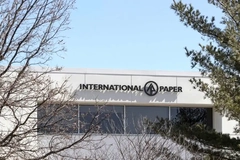Cutting supply chain emissions: StePac slashes GHG with MAP tech and sea freight

01 Feb 2023 --- Israel-based packager StePac has commissioned Wageningen University Food & Biobased Research facility in the Netherlands to analyze the impact of its supply chain model, and modified atmosphere packaging (MAP) designs on greenhouse gas emissions (GHG). The results show a 50-100% extension in food shelf life and a reduction in aviation emissions as the packaging designs facilitate shipping transport.
StePac says the analyses were conducted on products across numerous supply chains worldwide and that the results exceeded expectations “dramatically.” The company estimates that across all supply chains in which its packaging is used, it saved in excess of 100,000 metric tons CO2 emissions in 2022 – equivalent to the annual amount produced by 31,000 automobiles.
“Food waste contributes 8% of all GHG emissions associated with climate change, the biggest threat to our planet,” states Dr. Gary Ward, business development manager for StePac.
“StePac has demonstrated through this research that it helps lower GHG emissions by reducing fresh produce supply chain waste and often facilitating sea transport instead of air transport of produce to distant destinations. The reduction in GHG emissions far exceeds those generated in the full lifecycle of the packaging itself.”
 Using sea shipping instead of air frieght cuts emissions immensely.Field-to-fork calculation
Using sea shipping instead of air frieght cuts emissions immensely.Field-to-fork calculation
The recent spate of global weather events, from crippling droughts to European heat waves, has pushed climate change worries to the very forefront of consumer concerns, says StePac. Carbon emissions are recognized as the leading GHG implicated in climate change.
However, food waste – which produces methane – is a second major concern for consumers. Methane is roughly 80 times more potent than CO2, according to the Environmental Defense Fund.
The US' Environmental Protection Agency data shows that food waste is the single most common material landfilled and incinerated in the US, comprising 24% and 22% of landfilled and combusted municipal solid waste, respectively.
Dr. Jan Broeze, a senior scientist of Sustainable Food Chains at the Wageningen Food & Biobased Research, has developed a “field to fork” calculator to estimate greenhouse emissions associated with different aspects of fresh produce production and shipping.
Calculations considered the GHG emissions associated with the different plastic packaging solutions throughout the lifecycle, including the end-of-life (incineration, landfill and recycling).
It also included data provided by StePac about waste reduction based on research and commercial experience. Nine scenarios were examined, including melons from Honduras to the UK (Xtend Bulk), blueberries from Peru to China (Xflow), stone fruit from Spain to Brazil (Xtend bulk) and broccoli shipped domestically in Brazil (Xgo Retail).
Results  An example of StePac MAP packaging.The results showed that GHG emissions related to plastics production, use and end-of-life are relatively small compared to other GHG emissions along the food supply chain.
An example of StePac MAP packaging.The results showed that GHG emissions related to plastics production, use and end-of-life are relatively small compared to other GHG emissions along the food supply chain.
For example, in the shipping of melons from Honduras to the UK, the cultivation, harvest, and postharvest handling represented 41% of the total GHG emissions of 701 kg CO2/ton of melons.
Transportation represented 48% of the GHG emissions. On the other hand, Xtend packaging represented only 3% of the total CO2 emissions. The end-of-life represented only 1% of the total CO2 emissions and contributes significantly to reducing CO2 emissions by minimizing waste.
In one example, shipping unwrapped Galia and Cantaloupe melons from Honduras to the UK in 25 or more days resulted in a high waste of nearly 18%. Due to its low water-vapor transmission rate (WVTR), PE packaging with MAP properties is unsuitable and can result in 12.5% or greater waste levels, mainly due to microbial decay.
Xtend packaging with relatively high WVTR levels that eliminate excess moisture plays a key role in reducing the waste in sea freight to a minimum of less than 3.5%. This reduction in waste, when compared to PE packaging, represents a reduction in 6% of the GHG emissions or 940kg CO2 equivalents per container loaded with 20 metric tons of melons.
In tangible terms, shipping four containers of melons in Xtend saves the equivalent annual CO2 emissions produced by an average vehicle, estimated at 3,020 Kg, shows the research.
Sea over air
Ward says the research clearly demonstrates that to combat climate change, the industry needs to recognize the value of facilitating shipping as an alternative to air freight.
“This research clearly shows that StePac’s MAP solutions for fresh produce can contribute to reducing global GHG emissions by facilitating sea freight and by reducing waste in the supply chain,” asserts Broeze.
“The savings associated with their use far exceed the emissions generated in the life cycle of the packaging, establishing that they have a positive environmental impact.”
Recently, StePac partnered with BASF to utilize the German multinational’s Ultramid Ccycled, a chemically recycled polyamide six, for its MAP packaging.
By Louis Gore-Langton











